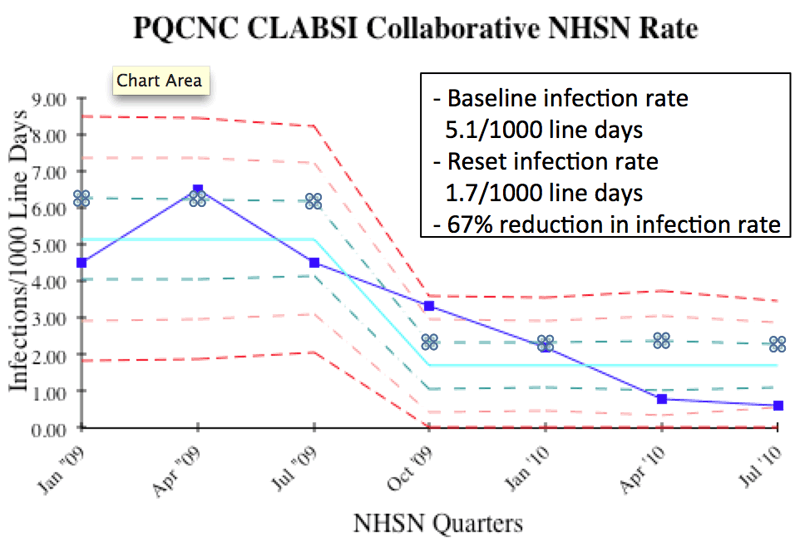With the potential to impact outcomes at every center and improve the health of a large population of North Carolina patients, and with recent support from the Division of Medical Assistance,, the goal of the Catheter Associated Blood Stream Infections (CABSI) Initiative is to reduce CABSI by 75% in participating Newborn Critical Care Centers by reducing the number of line days and by standardizing insertion and line maintenance.
While it is true that every health care provider and every parent has “intended” to protect vulnerable babies from nosocomial infections, it is also true that every system is designed to get the results that it gets. (Batalden) In this initiative we will develop a systems approach and design infections out. We will do rapid cycle testing and through small tests of change understand what elements must be built into the design. Our learning collaborative enables us to share what we learn and jump start everyone in new knowledge of re-design that supports fewer infections.

